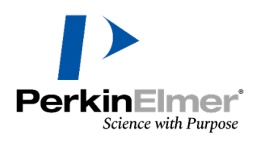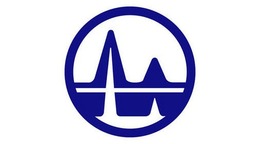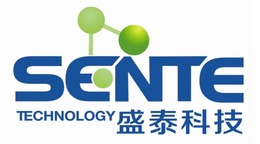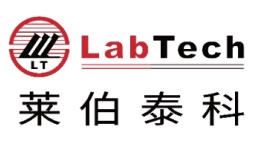方案详情文
智能文字提取功能测试中
APPLICATIONN OT E Liquid Chromatography/ Mass Spectrometry Authors: DerekJ.Mattern Stefan Edler Thomas Becker Ignazio Garaguso PerkinElmer, Inc. (LAS) Germany GmbH, Rodgau, Germany Introduction The Water Framework Directive, and its subsequentdaughter directives at the EU level, indicateenvironmental quality standards for water,’ and define more than 30 priority substances as significant risk to humans. These substances includeheavy metals, pesticides, herbicides, pharmaceutical and personal care products (PPCPs), per- andpolyfluoroalkyl substances (PFASs), and other industrial pollutants. The limits established under the minimum requirements for parametric values used to assess thequality of water are at low ug/L (ppb) levels, which require highly sensitive methods. In additionto the sensitivity, these contaminants encompass a wide variety of compounds and chemicalclasses which present a further analytical challenge for water scientists. Liquid chromatography coupled to tandem mass spectrometry (LC/MS/MS) has beendemonstrated to be the technology of choice when specificity and sensitivity are required.Indeed, several standard methods based on LC/MS/MS have been established to assess watercontaminants. However, owing to the diversity of compounds, different methods are typicallyrequired. Organic contaminants such as PPCPs metfomin and dimethylsulfamide, or PFAS'and their metabolites, can be chromatographically separated using reversed phase chemistry.However, polar compounds like glyphosate, bromate and chlorate require different chemistry,such as ion exchange, for a reliable separation and determination. Therefore, in this study, different methods for the separation,detection and quantitation of complex polar contaminants byUHPLC/MS/MS in water matrices are demonstrated. Two columnswere employed using three separate analytical methods tosuccessfully quantify metabolites such as trifluoracetic acid, theantidiabetic metformin, and various inorganic contaminants,such as chlorate and bromate. Experimental Hardware and Software Chromatographic separation and subsequent detection werecarried out using the PerkinElmer LX50 ultra-high-performanceliquid chromatograph (UHPLC) and the QSight@ 400 seriestriple quadrupole tandem mass spectrometer, respectively. Allinstrument control, analysis and data processing were performedusing the Simplicity3Q software platform. Solvents, Standards, and Sample Preparation LC/MS grade acetonitrile (ACN), water and formic acid used for the analysis and were obtained from Carl Roth (Karlruhe,Germany). Each authentic standard was purchased fromMerck KGaA (Darmstadt, Germany), with the exception ofdimethysulfamide, which was purchased from TCI DeutschlandGmbH (Eschborn, Germany). The stock solutions were kept inthe refrigerator until usage. All stock standards were initiallycombined to make an intermediate stock solution, which wassubsequently used for the preparation of calibration standards.Several water sources were used, including tap water anduntreated water. Method Parameters The LC methods and MS parameters are presented in Tables 1and 2, respectively. Table 2 is further divided into Table 2a, MRMtransitions with their respective optimized voltages, and Table 2b,MS source parameters. The MRM transitions, collision energies(CE), entrance voltages (EV) and collision cell lens 2 (CCL2) foreach analyte were detected and optimized by direct infusion ofthe standards. MS source conditions, such as drying, nebulizergas flow, and temperature settings were optimized by flowinjection analysis (FIA). Table 1. LC Parameters for the Three Different Methods Metformin and DMS Step Time (min) Flow Rate(mL/min) %A %B Curve 1 Initial 0.6 70 30 2 1.5 0.6 90 30 Linear 3 2.2 0.6 90 90 Linear 4 2.3 0.6 5 90 Linear 5 3 0.6 5 95 Linear 6 3.2 0.6 70 98 Linear 7 4 0.6 70 98 Linear Mobile Phase A 0.1 % Formic Acid in Water Mobile Phase B 0.1 % Formic Acid in Acetonitrile Column Oven Temperature 40°C Auto Sampler lemperature 20°C Injection Volume 100 pL TFA Step Time (min) Flow Rate(mL/min) %A % Curve 1 Initial 0.6 100 0 2 1.5 0.6 100 0 Linear 3 1.7 0.6 2 98 Linear 4 3 0.6 2 98 Linear 5 3.2 0.6 100 0 Linear 6 5 0.6 100 0 Linear Mobile Phase A 0.05% FormicAcid in Water Mobile Phase B 0.05% Formic Acid in Acetonitrile Column Oven lemperature 40°℃ Auto Sampler 20°C lemperature Injection Volume 10 uL Chlorate, Bromate, Bromide Glyphosate and AMPA Step Time (min) Flow Rate (mL/min) %A %B Curve 1 Initial 0.6 85 30 2 10 0.6 85 30 Linear 0.05% Formic Mobile Phase A Acid in Water Mobile Phase B 0.05% Formic Acid in Acetonitrile Column Oven lemperature 40°C Auto Sampler 20°C lemperature Injection Volume 100uL Table 2. MS Method Parameters for the Three Methods (a) MRM Parameters. Compound Name Polarity PrecursorIon Product ion CE EV CCL2 Metformin Positive 130 60 -18 6 -44 Metformin-2 Positive 130 113 -18 18 -36 Dimethylsulfamide Positive 125 108 -14 10 -40 Dimethylsulfamide-2 Positive 125 44 -41 19 -48 TFA Negative 112.8 68.9 16 -4 40 Chlorate Negative 82.9 67 27 -41 36 Chlorate-2 Negative 84.9 69.1 26 -35 36 Bromate Negative 126.8 111 31 -37 56 Bromate-2 Negative 126.8 94.9 45 -37 45 Bromide Negative 80.7 80.7 50 -2 64 Bromide-2 Negative 78.7 78.7 100 -2 52 AMPA Negative 110 63 29 -24 52 AMPA-2 Negative 110 79 33 -24 40 Glyphosate Negative 168 63 38 -20 44 Glyphosate-2 Negative 168 81 22 -16 56 (b) Source parameters based on different methods: Metformin and DMS Parameter Setting Value lonization Mode ESI Positive Drying Gas Setting (arbitrary units) 100 HSID Temperature (C) 320°C Nebulizer Gas Setting 250 Electrospray Voltage (V) 4000 Source Temperature (C) 350°℃ TFA Parameter Setting Value lonization Mode ESI Negative Drying Gas Setting 100 HSID Temperature (℃) 150°C Nebulizer Gas Setting 220 Electrospray Voltage (V) -4000 Source Temperature (℃) 300°C Chlorate, Bromate, Bromide Glyphosate and AMPA lonization Mode ESI Negative Drying Gas Setting 100 HSID Temperature (C) 320°C Nebulizer Gas Setting 250 Electrospray Voltage (V) -4000 Source Temperature (℃) 350°C Results and Discussion For improved separation and sensitivity, various analyticalcolumns were tested with different combinations of mobilephases. Following the evaluation, two columns using threeseparate analytical methods, based on various criteria (retention,thermal stability, etc.), were established for the quantification ofthese polar contaminants. Metformin and Dimethylsulfamide Metformin and dimethylsulfamide (DMS) are emerging ashigh-profile compounds, as they are becoming ever more presentin the environment, especially our wastewater. As metformin isthe most commonly prescribed antidiabetic drug, and the factthat it is unchanged in the human body, it is quite prevalent inwastewater.4 Moreover, DMS is a metabolite of the fungicidesdichlofluanid and tolylfluanid. As the use of these fungicides isquite common, especially in Germany, it makes the monitoringof DMS crucial for the water supply. DMS has also been shownto be the starting material for the formation of the carcinogeniccompound nitrosamine (NDMA) during the ozonation processduring water treatment. As these contaminants should be monitored in the water supply, an analytical method was developed showcasing the linearity of metformin and DMS over two orders of magnitude (10-500 ng/L), with regression coefficients (r)≥0.995. Figure 1 shows the calibration curves for the two compounds inthe range of 10 - 500 ng/L, and an example of a chromatogramat 50 ng/L is shown in Figure 2. These figures illustrate theoverlay of the two chemicals'quantifier fragments. To demonstrate that the PerkinElmer QSight 420 is capable ofdetecting and quantifying these polar contaminants, variousuntreated wastewater and drinking water samples were tested,as shown in Table 4. Metformin was present in both untreatedwater samples, as well as DMS in one of the samples. Figure 1. Calibration curves for metformin and dimethylsulfamide (10-500 ng/L). Figure 2. Overlay of quantifier fragments for dimethylsulfamide (in green) and metformin (in red) at 50 ng/L. Table 4. Results of samples ofuntreated and treated (drinking) water along with theirrespective %RSDs. Sample Substance CalculatedAmount(ng/L) %RSD (n=4) Untreated Water-| Metformin/ 187 0.9 Dimethylsulfamide 16.9 2.6 Untreated Water-II Metformin/ 187 0.9 Dimethylsulfamide 16.9 2.6 Drinking Water-l Metformin/ 187 0.9 Dimethylsulfamide 16.9 2.6 Drinking Water-II Metformin/ 187 0.9 Dimethylsulfamide 16.9 2.6 Trifluoroacetic Acid Trifluoroacetic acid, also known as TFA, is emerging as a contaminantof concern throughout the EU and its member states, owing to thediscovery that it is a prevalent contaminant in the environment. Thesource of TFA in the environment has been linked to the breakdownproduct of various pesticides, as well as industrial chemicals includinghydrochlorofluorocarbons and hydrofluorocarbons, making TFA quiteubiquitous in the environment and the water supply.5 To demonstrate that TFA can be measured sufficiently with theQSight, the linearity is considered. As shown in Figure 3, the linearityranging from 100 - 1500 ng/L resulted in a regression coefficient (r?)≥0.995. Figure 4 depicts an overlay of the chromatogramsfor TFA at concentrations of 100, 500 and 1500 ng/L. Theuntreated and drinking water samples were then measured totest the amount of TFA present, as shown in Table 5. Importantto note, is that TFA is not yet covered by any EU regulation,however, as more attention is being drawn to its continuouspresence in different matrices from the food to the watersupply, it will likely be implemented into new regulations soon.Furthermore, work is ongoing to develop a combined methodfor the detection of TFA with other haloacetic acids (HAAs)currently included under EU regulations. PerkinElmer hasdemonstrated, in a previously published application, thecapabilities of the QSight for the analysis these compounds,thus combining these methods would expand on the overallcompound profile for these emerging contaminants.6 Figure 3. Calibration curve for TFA (100-1500ng/L). Figure 4. Overlay of chromatograms for TFA at concentrations of 100 ng/L (blue) 500 ng/L (green) and 1500 ng/L (red). Table 4. Results of samples ofuntreated and treated (drinking) water along with theirrespective %RSDs. Sample Substance Calculated %RSD Amount (ng/L) (n=3) Untreated Water-I TFA 250 3.5 Untreated Water-II TFA 143 4.7 Drinking Water-l TFA 238 5.9 Drinking Water-II TFA 113 3.9 Chlorate, Bromate, Bromide Glyphosate and AMPA An analytical method covering chlorate, bromate, bromide,glyphosate and AMPA was successfully developed for these verydifficult polar contaminants utilizing an ion exchange column.Linearity could be obtained for each compound, with a dynamicrange of 2-3 magnitudes and regression coefficients (r²)≥0.995,as shown in Figure 5. Moreover, with this column, adequateseparation could be obtained, as shown in Figure 6. As chlorate and bromate are covered in the new EU water regulation,bromide was included as an interesting add-on to the analysis. Asbromide is usually known as an ICP-MS component, good resultscould be shown that prove it can also be determined using the QSighttriple quadrupole system. Moreover, as chlorate is present in the watersupply owing to its use during the water treatment process, bromateis also formed likely from the ozonation during the water treatmentprocess.7 This is in contrast to glyphosate and AMPA, as detailedabove, which are major contaminants from agriculture. However, inbringing these very polar compounds together in one method, itenables the user to cover a wider range of metabolites in one run. Theresults for untreated and drinking water samples are shown in Table 6. Concentration Figure S. Calibration curves for chlorate (0.05-20 ug/L), bromate (0.05-20ug/L), bromide (0.1-20 ug/L),glyphosate (0.01-20 ug/L) and AMPA (0.01-20 ug/L). Figure 6. Overlay of AMPA (purple),glyphosate (grey), bromate (green), bromide (blue) and chlorate (red) at 0.5 ug/L. Conclusion Three analytical methods, using just two HPLC columns,were developed to measure several of the most difficult polarcontaminants in the global water supply. Whether analyzinguntreated or drinking water, the coupling of PerkinElmer's LX50UHPLC to the QSight 420 proved to be an efficient and effectivesolution in tackling these tough compounds. Furthermore,this work demonstrated that it is not necessary to use specialchromatographic separation techniques. such as ionchromatography, which add additional hardware and cost to the system. Owing to the superb sensitivity of the QSight 400series, it was additionally not required to employ pre-concentrationsteps like SPE or online-SPE into the methodology, saving furthertime and cost. Not only was the sensitivity more than adequate when comparedto current regulations, the reproducibility of the results alsodemonstrated the robustness of these methods for use in a waterlaboratory (Table 7). With regulations becoming stricter and strictereach year, having methods covering a wide range of compounds isa must in every lab's toolbox. Table 6. Results of samples ofuntreated and treated (drinking) water along with theirrespective %RSDs. Sample Substance Calculated Amount (ng/L) %RSD(n=3) Chlorate 0.13 3.1 Bromate ND - Untreated Water-l Bromide 2.33 1.3 AMPA <10 Glyphosate 0.017 6.9 Chlorate 0.31 3.6 Bromate ND - Untreated Water-II Bromide 8.6 4.9 AMPA <10 Glyphosate 0.024 4.2 Chlorate 0.33 4.8 Bromate 0.76 3.3 Drinking Water-l Bromide 4.1 0.8 AMPA 0.017 3.3 Glyphosate 0.034 1.7 Chlorate 0.33 2.6 Drinking Water-ll Bromate 0.58 7.6 Bromide 3.3 3.5 AMPA 0.016 6.3 Glyphosate 0.038 4 Table 7. Action level summary table. S.No. Name QSight 420 %CV(n=3) EU Action Level 1 Metformin 10 ng/L 1.7 100 ng/L* 2 Dimethylsulfamide 10 ng/L 1.3 100 ng/L 3 TFA 100 ng/L 2.3 100 ng/L* 4 Chlorate 50 ng/L 4 250 pg/L 5 Bromate 50 ng/L 4.6 10 ug/L 6 Bromide 100 ng/L 6.1 10 pg/L* 7 AMPA 10 ng/L 6.4 100 ng/L 8 Glyphosate 10 ng/L 3.0 100 ng/L *Not yet covered, estimated levels to be introduced. References ( 1. COUNCIL D IRECTIVE 98/83/EC of 3 November 1998 on the quality of water intended for human consumption [Internet].[cited 2019 Sep 30]. Available from: htt ps://eur- l ex. e u r opa.eu/ le g a l - co nt en t / EN / TXT/ PD F /? u ri=C E LEX :3 1 998L0 0 83 & fro m =E N. ) 2. DIRECTIVE 2008/105/EC OF THE EUROPEAN PARLIAMENT ANDOF THE COUNCIL of 16 December 2008 on environmentalquality standards in the field of water policy, amending andsubsequently repealing Council Directives 82/176/EEC, 83/513/EEC, 84/156/EEC, 84/491/EEC, 86/280/EEC and amendingDirective 2000/60/EC of the European Parliament and of theCouncil [Internet]. [cited 2020 Feb 2]. Available from:https://eur-lex.europa.eu/legal-content/EN/TXT/PDF/?uri=CELEX:32008L0105&from=EN. 3. DIRECTIVE 2017/0332 (COD) OF THE EUROPEAN PARLIAMENTAND OF THE COUNCIL on the quality of water intended forhuman consumption (recast) [Internet].[cited 2020 Feb 1].Available from: https://eur-lex.europa.eu/resource.html?uri=cellar:8c5065b2-074f-11e8-b8f5-01aa75ed71a1.0016.02/DOC 1&format=PDF. 4. Study_report_public_consultation_pharmaceuticals_environment.pdf [Internet]. [cited 2020 Feb 3]. Available from:https://ec.europa.eu/info/sites/info/files/study report public_consultation pharmaceuticalsenvironment.pdf. 5. EURL-SRM - Residue Findings Report Difluoroacetic acid (DFA),Trifluoroacetic acid (TFA) [Internet]. Available from: https:/www.eurl-pesticides.eu/userfiles/file/eurlsrm/eurlsrm residue-observation tfa-dfa.pdf. 6. Analysis of Haloacetic Acids in Drinking Water- Application Note[Internet]. [cited 2020 Feb 23]. Available from: https://www.perkinelmer.com/lab-solutions/resources/docs/APP Analysis ofHaloaceticAcids in Drinking Water 014446 01.pdf. 7. Bromate in Drinking-water Background document fordevelopment of WHO Guidelines for Drinking-water Quality[Internet]. [cited 2020 Feb 3]. Available from:https://www.who.int/water sanitation health/dwq/chemicals/bromate260505.pdf. For a complete listing of our global offices, visit www.perkinelmer.com/ContactUs 由于化合物的多样性,通常需要不同的方法。有机污染物如PPCPs、二甲双胍和二甲磺胺,或PFAS及其代谢物,可以使用反相化学色谱分离。然而,极性化合物如草甘膦、溴酸盐和氯酸盐需要不同的分离模式,如离子交换以可靠的分离和测定。在本研究中,采用UHPLC/MS/MS对水基质中复杂极性污染物进行分离、检测和定量。两个色谱柱使用三种不同的分析方法,成功地量化代谢产物,如三氟乙酸,抗糖尿病二甲双胍,和各种无机污染物,如氯酸盐和溴酸盐。
关闭-
1/7
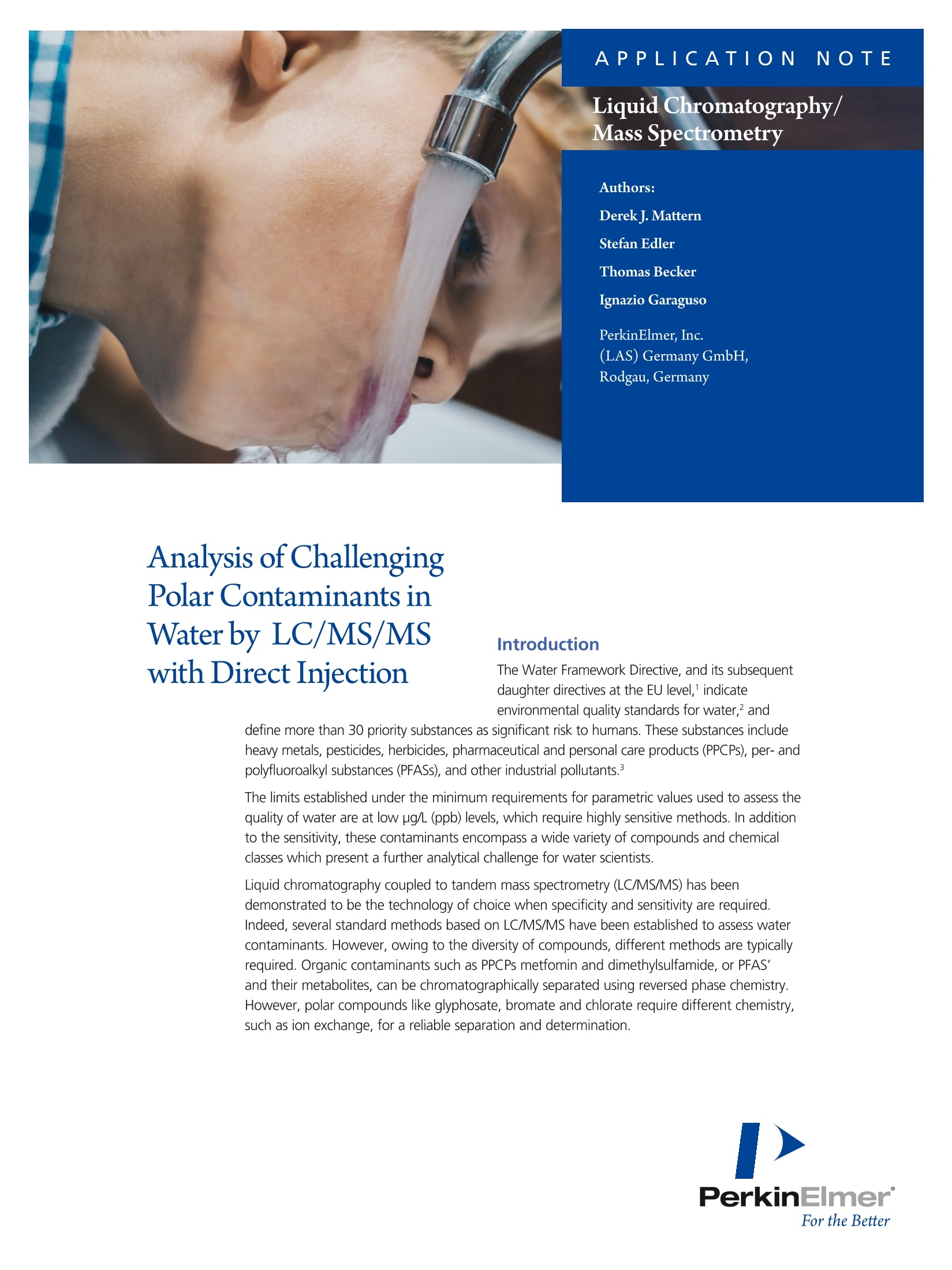
-
2/7

还剩5页未读,是否继续阅读?
继续免费阅读全文产品配置单
珀金埃尔默企业管理(上海)有限公司为您提供《水中极性污染物检测方案(液质联用仪)》,该方案主要用于环境水(除海水)中有机污染物检测,参考标准《暂无》,《水中极性污染物检测方案(液质联用仪)》用到的仪器有三重四极杆液质联用仪QSight 400 。
我要纠错
相关方案
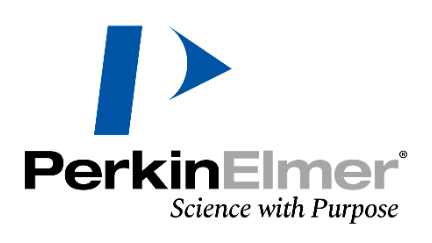


 咨询
咨询